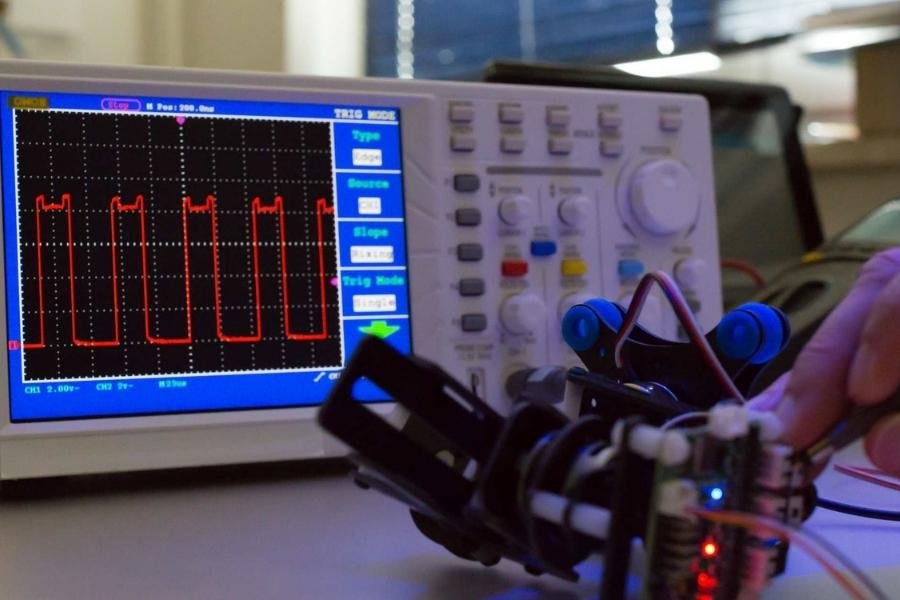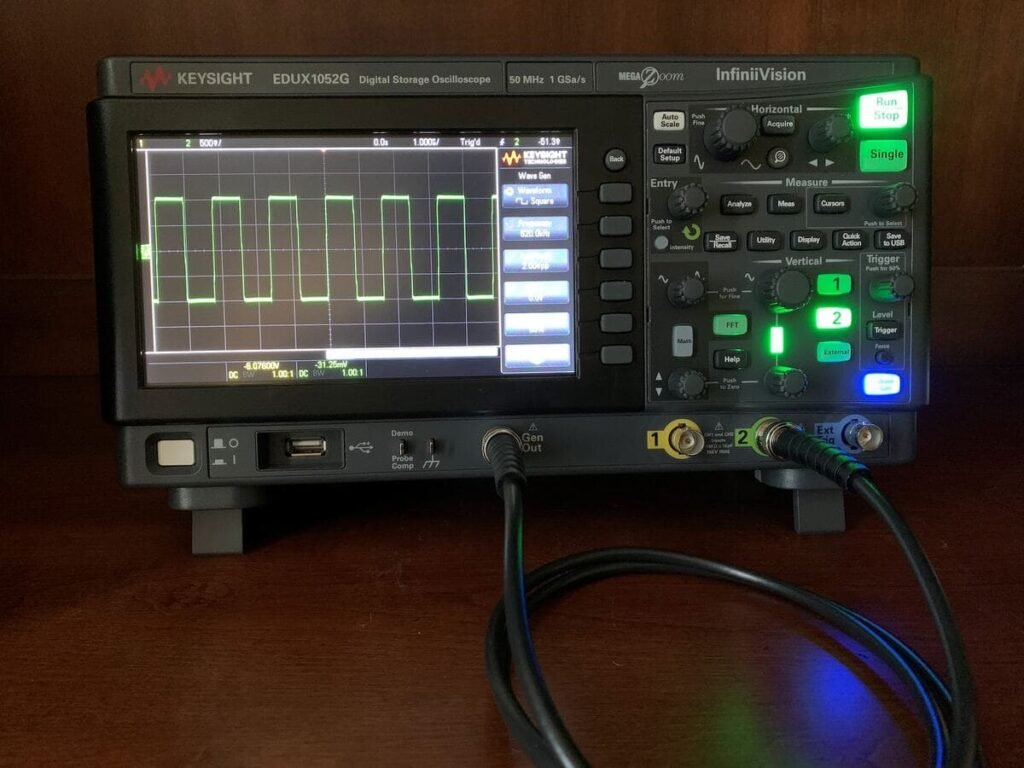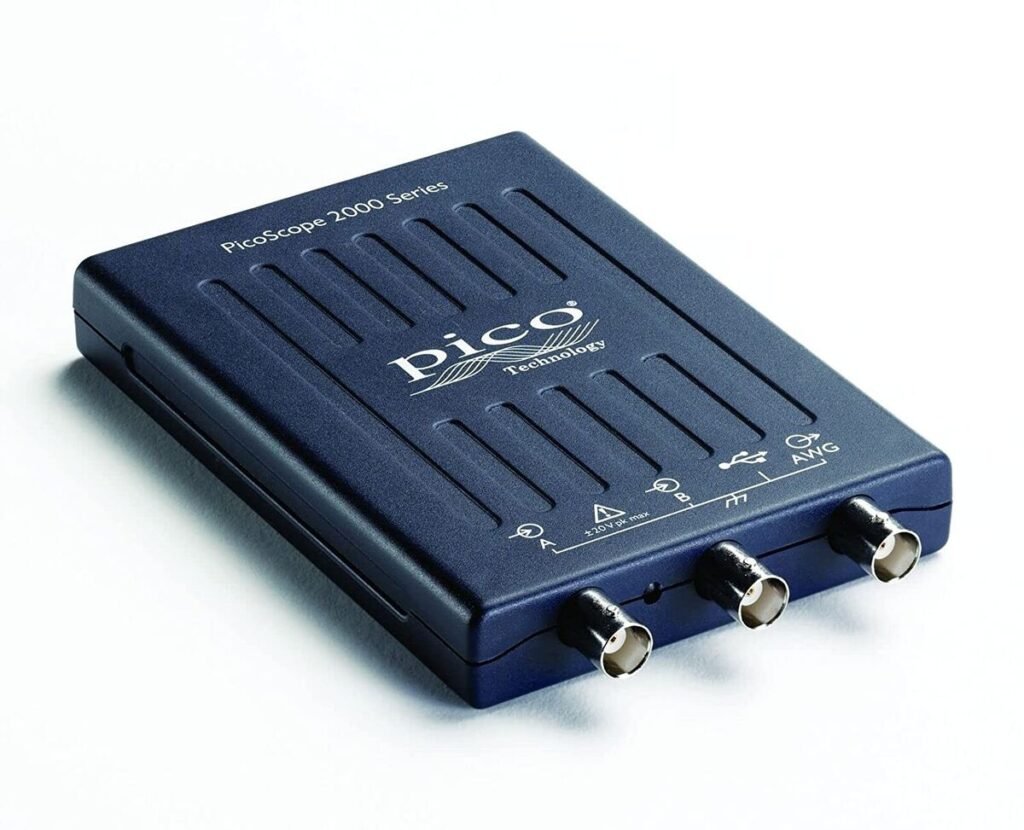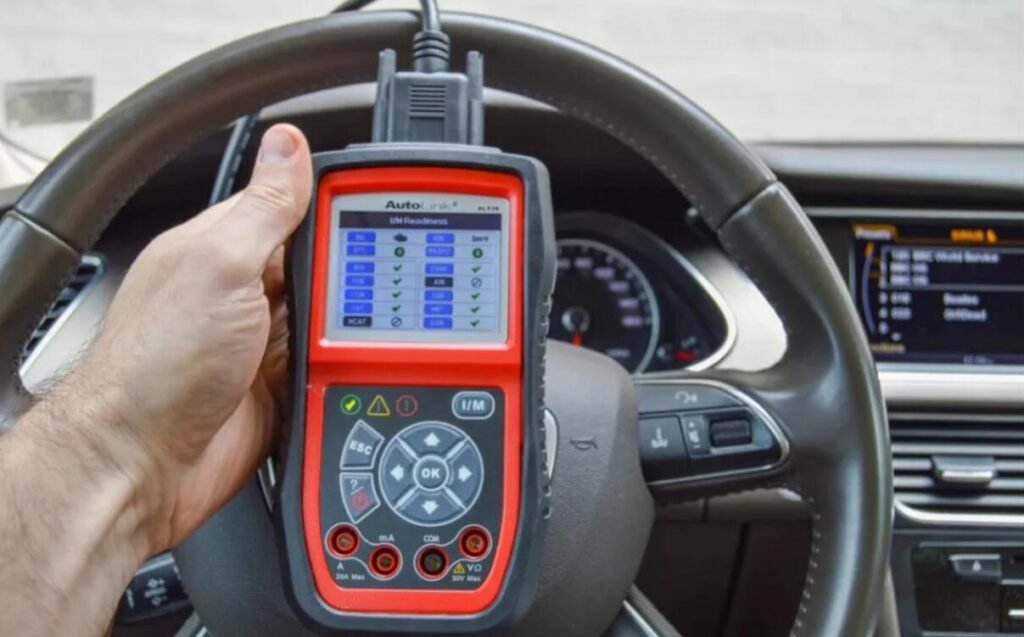What Does an Oscilloscope Do? (2024 update)
Oscilloscopes are useful to test and measure tools that measure the frequency of an input signal. They not only provide you with visual readings but also store data for post-analysis and comparison. The first generation of oscilloscopes were analog and based on cathode ray tubes. Today oscilloscopes are fully digital and are packed with advanced features that an electrical engineer only 40 years ago could have only dreamt about.








Don’t forget to also peruse our oscilloscopes, spectrum analyzers, and other electronics lab tools.
These devices have many applications, from debugging circuits to detecting noise or testing amplifiers. Let’s take a closer look at oscilloscope uses in more detail.
An oscilloscope can be used for many things, from monitoring the performance of high-performance cars to analyzing electrical signals in computers or other electronic devices.
It measures voltage as a graph over time, allowing users to easily monitor voltage changes over time. Below, we cover some of the uses of oscilloscopes:
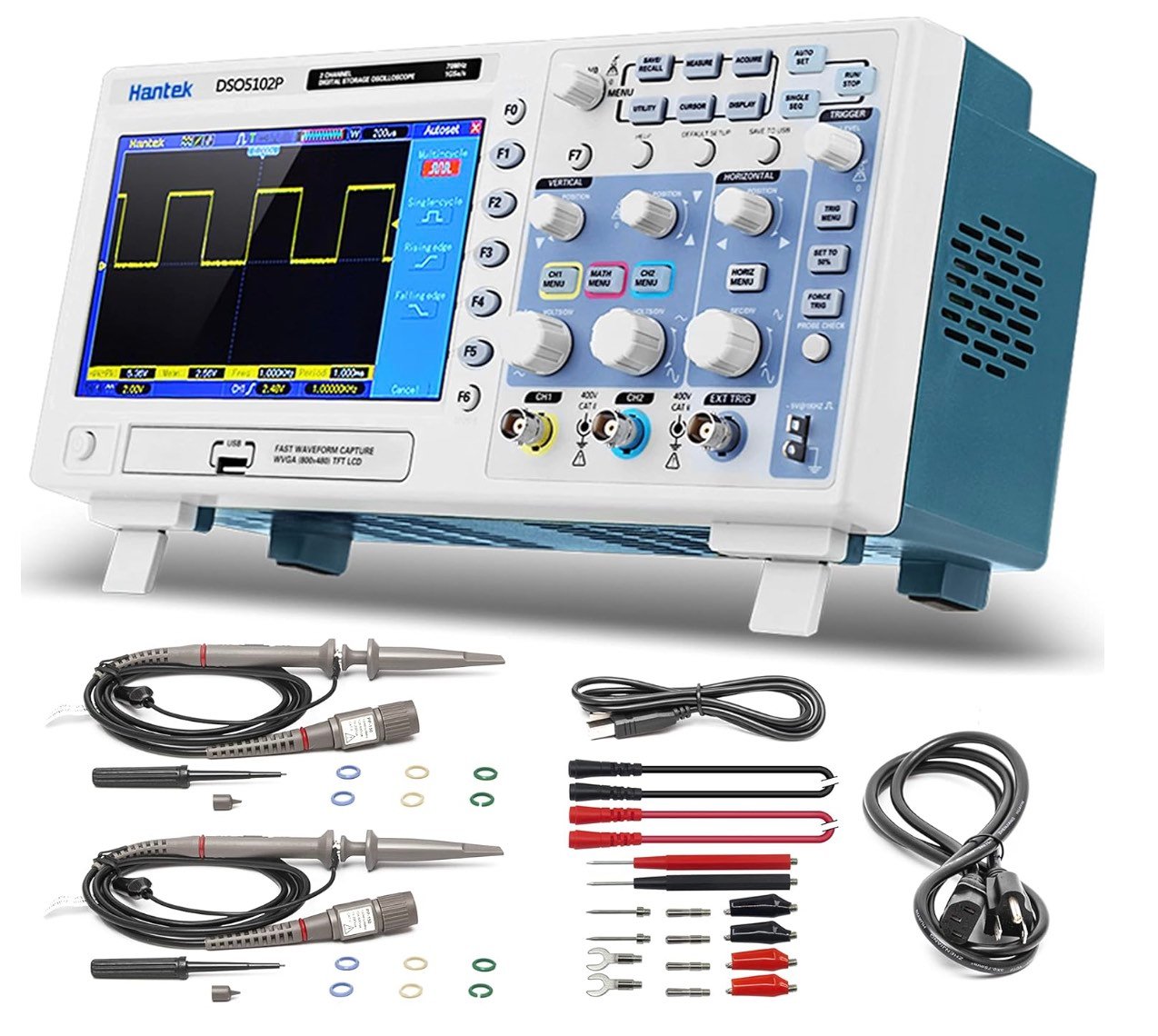

Electronic Development And Debugging
Oscilloscopes are used widely by engineers and developers to debug circuits and solve problems with circuit boards. They are extremely helpful when you are using a microcontroller or when you are working with a mixed signal circuit that might include digital and analog circuits.
As oscilloscopes allow you to view voltage changes over time, they come in handy when you are troubleshooting circuits with intermittent problems. You can also use oscilloscopes for debugging embedded systems, where software bugs are not visible.
You can also use oscilloscopes to view digital signals and view communication between different devices. If your circuit has a problem and you are not sure about it, an oscilloscope can help you troubleshoot the issue with ease.


Testing Of Electronic Devices
Oscilloscopes are useful for testing the performance of electronic devices, including circuits, motors, transducers, and more.
You can use them to test the speed of a motor, the condition of a circuit, or the performance of a sensor. You can also use oscilloscopes to measure the frequency of an AC signal or the voltage in a DC circuit.
When testing a circuit, an oscilloscope can be helpful in identifying issues with a circuit. For example, if you are testing an RLC circuit, the oscilloscope can help you determine if the circuit is resonant or not. An oscilloscope can also be used to test waveforms and voltages.
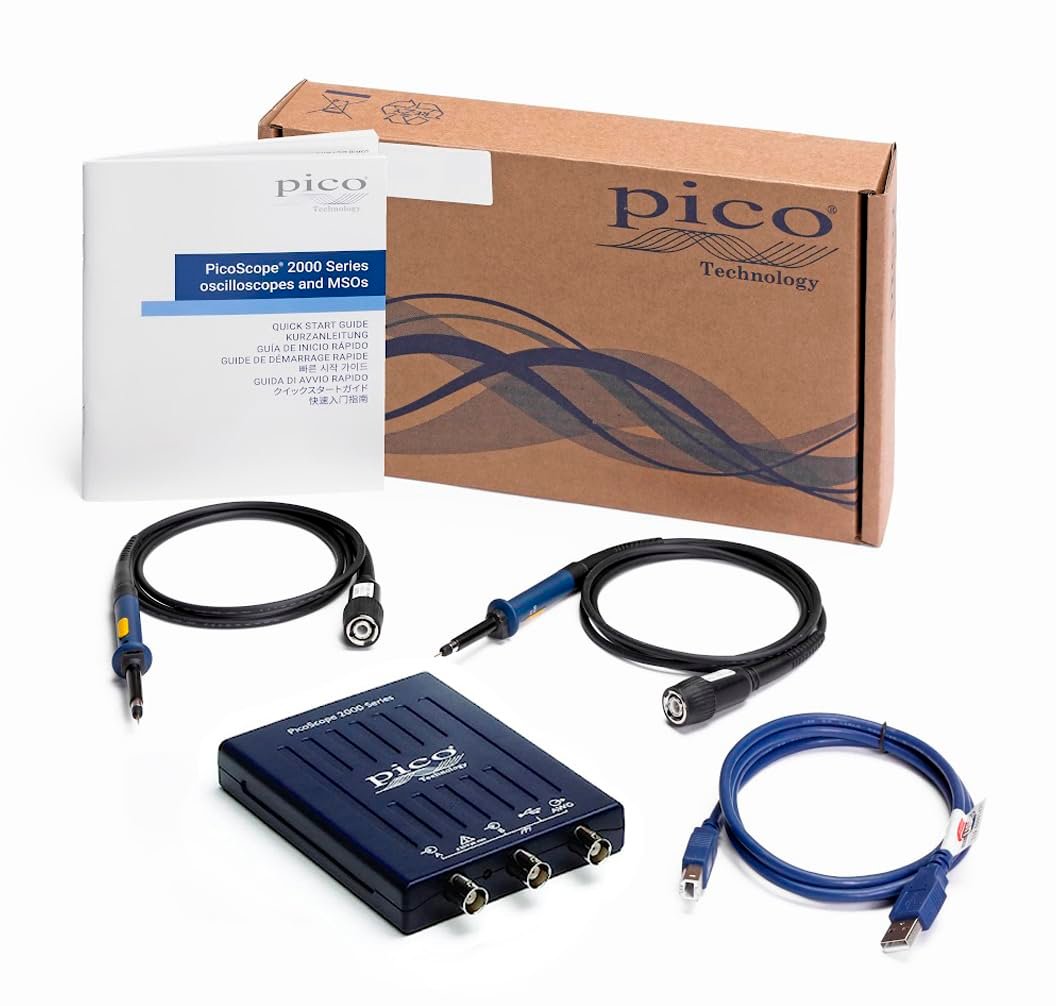

Detecting Noise And Humming
If you have a faulty circuit or a device that is producing unwanted noise, you can use an oscilloscope to find the source of the noise and eliminate it.
You can use an oscilloscope to detect the noise and then use a noise or interference filter to get rid of the noise.
Oscilloscopes are useful for finding the source of humming in electronic devices with the help of a spectrum analyzer or a noise and frequency analyzer.
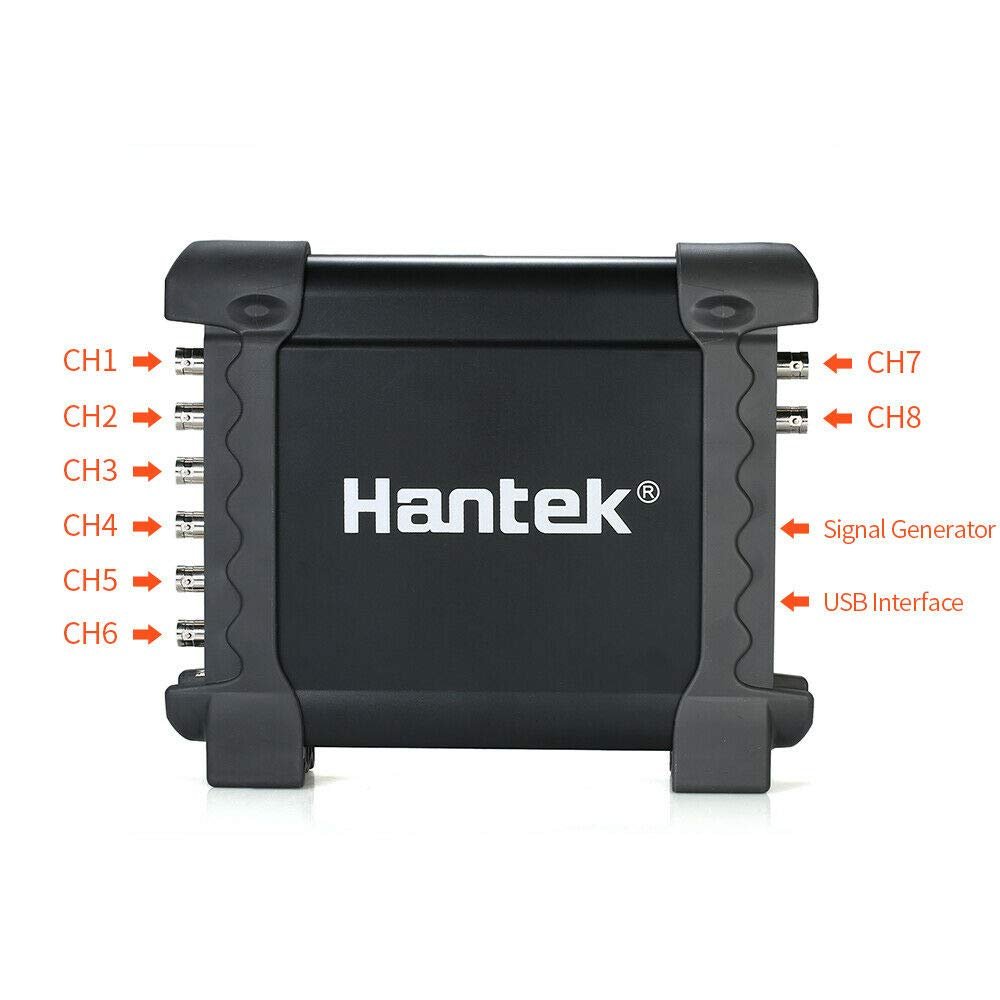

Measuring The Frequency Of An Audio Signal
If you want to measure the frequency of an audio signal, like a musical note, you can use an oscilloscope.
You can use an oscilloscope to measure frequency and perform other experiments related to sound. For example, you can use an oscilloscope to measure the distance between two speakers with the help of a microphone attached to the oscilloscope.
Finding The Responsiveness Of A Touch Screen
If you want to test the responsiveness of a touch screen, you can use an oscilloscope. The oscilloscope can help you determine the exact position of your finger or the stylus.
You can use a high-voltage probe to attach the oscilloscope to the touch screen, and then view the voltage changes in the oscilloscope graph.
With the help of the oscilloscope, you can determine the location of your finger or the stylus on the touch screen.
Customer Review Feedback on What Does an Oscilloscope Do?
An oscilloscope is an indispensable tool for anyone working with electronics, from hobbyists to professional engineers. It functions as a sophisticated graphing multimeter, providing a visual representation of electrical signals over time. This allows users to observe voltage changes that are too rapid for standard meters to detect. Key functions include waveform analysis, precise voltage measurements, timing analysis, event triggering, and in some models, FFT analysis for frequency spectrum visualization. Oscilloscopes are crucial for a wide range of applications, such as debugging circuits, optimizing power supplies, analyzing audio signals, and troubleshooting digital systems. They enable users to measure characteristics like signal shape, frequency, amplitude, pulse width, rise times, and phase relationships between different signals. While there can be a learning curve, mastering an oscilloscope provides invaluable insights into circuit behavior, making it an essential instrument for understanding and improving electronic designs. Whether you’re examining a microcontroller’s clock signal or fine-tuning an audio circuit, an oscilloscope offers unparalleled visibility into the invisible world of electronic signals.
Reviewer Final Comments
Oscilloscopes are useful for so many things, from debugging circuits to testing electronic devices.
They are helpful in finding the source of noise and eliminating it, testing the performance of circuits, and much more. An oscilloscope can be used by engineers, developers, and hobbyists alike.
If you are in any of these fields or even if you just want to test different circuits, you should consider purchasing an oscilloscope.

